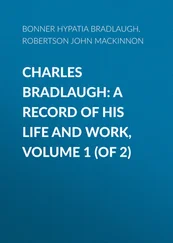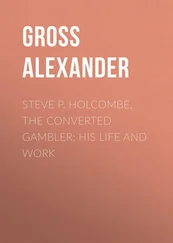Brad Stevens - Monte Hellman - His Life and Films
Здесь есть возможность читать онлайн «Brad Stevens - Monte Hellman - His Life and Films» весь текст электронной книги совершенно бесплатно (целиком полную версию без сокращений). В некоторых случаях можно слушать аудио, скачать через торрент в формате fb2 и присутствует краткое содержание. Год выпуска: 0101, Издательство: McFarland & Company, Жанр: Старинная литература, на английском языке. Описание произведения, (предисловие) а так же отзывы посетителей доступны на портале библиотеки ЛибКат.
- Название:Monte Hellman: His Life and Films
- Автор:
- Издательство:McFarland & Company
- Жанр:
- Год:0101
- ISBN:нет данных
- Рейтинг книги:4 / 5. Голосов: 1
-
Избранное:Добавить в избранное
- Отзывы:
-
Ваша оценка:
- 80
- 1
- 2
- 3
- 4
- 5
Monte Hellman: His Life and Films: краткое содержание, описание и аннотация
Предлагаем к чтению аннотацию, описание, краткое содержание или предисловие (зависит от того, что написал сам автор книги «Monte Hellman: His Life and Films»). Если вы не нашли необходимую информацию о книге — напишите в комментариях, мы постараемся отыскать её.
Monte Hellman: His Life and Films — читать онлайн бесплатно полную книгу (весь текст) целиком
Ниже представлен текст книги, разбитый по страницам. Система сохранения места последней прочитанной страницы, позволяет с удобством читать онлайн бесплатно книгу «Monte Hellman: His Life and Films», без необходимости каждый раз заново искать на чём Вы остановились. Поставьте закладку, и сможете в любой момент перейти на страницу, на которой закончили чтение.
Интервал:
Закладка:

What is the Haunted Cave?
The superficially crude title proves to have unexpected resonances. One might expect the film to be called Beast from a Haunted Cave or Beast from the Haunted Cave. Beast from Haunted Cave suggests something both more and less precise; is "Haunted Cave" a name ("this place is known as Haunted Cave") rather than a description ("this is a haunted cave")? The film compounds the ambiguity by presenting two possible candidates for the title role. Although the climax occurs in what Gil describes as "a haunted cave," the place this beast appears to be from isn't a cave at all, but a mine.
What Is the Beast's Origin?
So is the beast from the haunted cave or the area under the mine? The closest we come to an explanation occurs when Marty tells Alex he "saw pieces of an egg in the mine ... that could have been there for millions of years until the men working on the mine found it." But Hellman's position is closer to that of Alex, who insists, "I don't care what it is. I don't care if it chews up the whole state. I don't care if it came from Mars or happened by spontaneous combustion."
Why Does It Travel?
Why does the beast journey from the mine to the cave (apparently dragging the half-dead Natalie, a source of food, along with it)? Does it follow Gil and the gangsters? Is it trying to find a new home after its old one is destroyed in the explosion? Or is it simply returning to its place of origin?
What Is Its Function?
Given the figural uncertainty attendant upon the beast's visual presentation, as well as the ambiguity of its origin and motivation, it is hardly surprising to discover that the creature's symbolic/ideological function is similarly problematic. Here, Hellman anticipates one of the horror genre's richest motifs: the tracing of America's collective nightmare to a source in the Wild West, an idea given its most thorough expression by Tobe Hooper. In The Texas Chain Saw Massacre (1974), the monstrous family are the true inheritors of America's pioneer tradition, a notion taken to even more outrageous extremes in Hooper's 1986 sequel, where, having set up home in an abandoned amusement park decorated with images of Western icons, the cannibals justify themselves by reference to standard capitalist practice. 30Similarly, in Death Trap (1976) a serial killer is linked with the heroes of Western mythology by the country and western songs ("a cowboy is true to his word") on the soundtrack, while Poltergeist (1982) traces its supernatural events to the Indian burial ground over which a new American town has been built (Kubrick's The Shining uses a similar explanation).
Beast from Haunted Cave frequently alludes to American history. Gypsy sings a humorous variation of "Home on the Range" ("Oh give me a home where the weight-lifters roam"), and the ski resort's bar is decorated with Western-themed imagery, including a wagon wheel and a pianola with a sign reading, "I am 75 years old — still willing to play." The laconic Gil — variously called "Cowboy," "Mountain Man," "Nature Boy" and "Davy Crockett"— is linked with America's pioneers; he owns a wooden cabin and relates Marty's sense that they are being followed to the kind of intuition which "has saved many a trapper and prospector" (for Gypsy he also recalls a more recent past of "blind dates and bobby socks"). Alex's gang, on the other hand, embodies the West's spirit of lawless anarchy. A news report describes their robbery as "The biggest story to hit the Black Hills since the murder of Wild Bill Hickock."
But the film also alludes to a much older culture. One of several possibilities is that the conflict between the beast (which "could have been there for millions of years") and Alex's gang reenacts the struggle between America's settlers and the country's indigenous population. Gil's housekeeper is a Native American ("It's Geronimo!" screams Byron upon first seeing her), his cabin contains a piece of Indian sculpture (which Byron finds endlessly fascinating), and Marty observes that "the Black Hills are sacred Indian country. Heap bad medicine for evil men from foreign lands" (though this idea is not developed consistently, since the beast's first two victims are innocent women, the second an actual Native American).
Gil and the gangsters venture into a savage wilderness to escape civilization rather than advance its cause, and in this they resemble the beast, whose desire to avoid humanity provides an ironic commentary on the similar retreats of Gil and Alex. Although they perceive themselves as moral opposites, Alex's contempt for ordinary people, "all tied down to their petty little futures," is merely the flip side of Gil's determination to withdraw from human interaction within a cabin as isolated as the beast's cave. 31One of the film's most striking moments occurs when Alex finally discovers the monster's lair. As Alex enters the cave, Hellman cuts to Byron's cocooned corpse, 32then back to Alex shouting "Good Lord!" as he looks offscreen. This is directly followed by a shot of Gil holding a rifle. The editing places Gil in the visual field that would usually be occupied by either the monster or some evidence of its activities. By establishing these connections between three supposedly hostile groups, Hellman undercuts that natural virility of which Gil is felt to be the possessor. 33
As Marty's insistence that "My business with that baby outside is strictly personal. It's the most personal thing that's ever happened to me" suggests, the beast is related to tensions between the central characters, who are defined by their basic drives: Alex smokes a phallic cigar, Gil smokes a pipe, Gypsy drinks heavily, Marty seeks sexual satisfaction, and Byron is constantly eating. That this is part of a pattern connecting these individuals with the monster (which simply follows its own drives) is suggested by the beast's introduction — it attacks Natalie immediately after Marty playfully scares the woman by sneaking up behind her (much as Alex later appears behind Gypsy in the cave) — and the scene in which it attacks Byron. After Byron is dragged away, Hellman cuts to a close-up of Alex hungrily stuffing food into his mouth, the first time we have seen him eat anything. With Byron removed from the narrative, the drives he embodies are promptly absorbed by another character; as Gypsy confesses to Gil, "I've become part of Alex. Maybe a sick part, but a permanent one."

This process suggests a harsh practicality typical of Hellman — human aspiration is dwarfed by a beautiful but merciless natural order (all rocky landscapes and inhospitable terrains) which instantly accommodates any individual loss. And Beast from Haunted Cave resembles Hellman's later masterpieces in other ways. The relationship between Gypsy, Gil and Alex is essentially an early version of the Catherine/Clayton/Matthew triangle in China 9 , Liberty 37 , while the difficult journey undertaken by several men and one woman hiding their true motivations anticipates The Shooting. And, like Two-Lane Blacktop and China 9 , it all ends in fire. 34 Beast from Haunted Cave may be an apprentice work (though that complex interaction between foreground and background which would distinguish the mature films is already apparent), but if Hellman was ultimately unable to transcend the trashy concept, he certainly managed to express an oppositional coherence. The film is structured in terms of its progress through a series of increasingly primitive landscapes and emotional states: the first image shows a ski-lift's mechanism, 35the last a primeval creature dying in an ancient cave. Although the eventual formation of a "good" heterosexual couple appears to provide a sense of closure, the final shot — with Gil and Gypsy almost lost in the corner of the frame while the beast burns in the background — has a curiously desolate tone. The beast may have few positive connotations or claims on our sympathy (unlike, say, King Kong or Frankenstein's monster), but its fiery demise at least expresses a genuine energy, something conspicuously lacking in the "romantic" leads.
Читать дальшеИнтервал:
Закладка:
Похожие книги на «Monte Hellman: His Life and Films»
Представляем Вашему вниманию похожие книги на «Monte Hellman: His Life and Films» списком для выбора. Мы отобрали схожую по названию и смыслу литературу в надежде предоставить читателям больше вариантов отыскать новые, интересные, ещё непрочитанные произведения.
Обсуждение, отзывы о книге «Monte Hellman: His Life and Films» и просто собственные мнения читателей. Оставьте ваши комментарии, напишите, что Вы думаете о произведении, его смысле или главных героях. Укажите что конкретно понравилось, а что нет, и почему Вы так считаете.


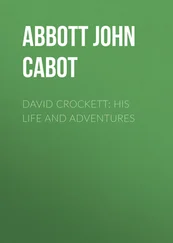

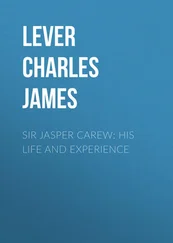
![William Frith - John Leech, His Life and Work. Vol. 1 [of 2]](/books/747171/william-frith-john-leech-his-life-and-work-vol-thumb.webp)

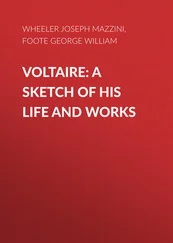
![William Frith - John Leech, His Life and Work, Vol. 2 [of 2]](/books/748201/william-frith-john-leech-his-life-and-work-vol-thumb.webp)
